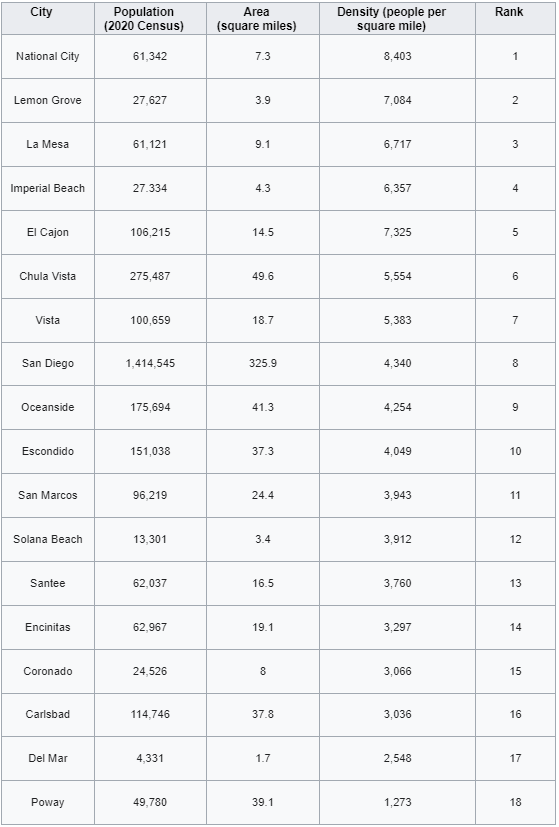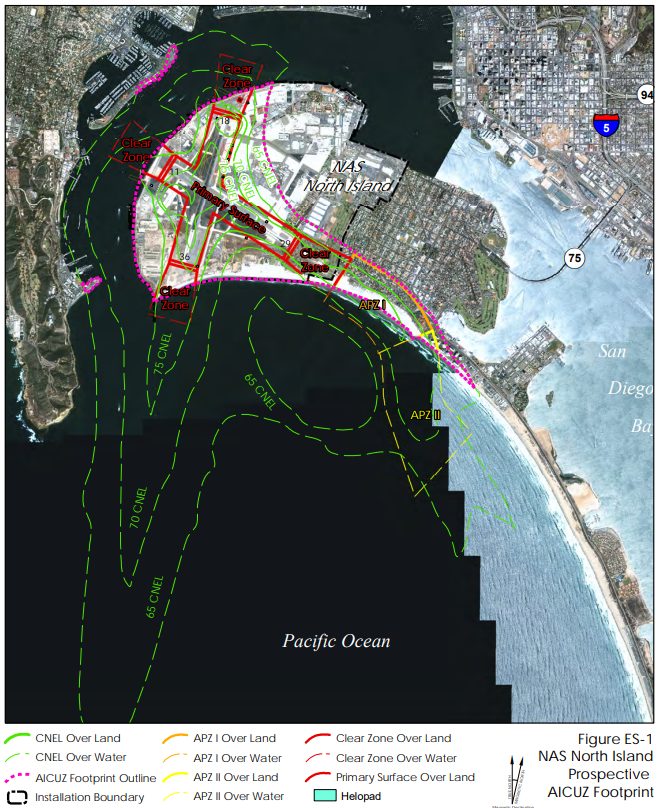
Coronado is out of compliance with the state’s mandated housing allocation, and has been for nearly two years. City officials say they want to comply – the challenge is how to do it.
“In Coronado, we’re big believers in doing our fair share to accommodate housing needs,” Mayor Richard Bailey said. “We’re willing to do our part, but we can only fit so many people in such a small space.”
Coronado is not alone: about 58 percent of California’s cities – 247 total – have not hit their numbers, according to data released by the California Department of Housing and Community Development (HCD). In December, the HCD warned Coronado that it may face litigation if it does not comply with its housing allocation.
A major part of the challenge, city officials say, is determining where to put more housing. While Coronado’s municipal limits stretch 8 square miles, about 4.5 square miles are consumed by the Naval Air Station North Island, and the northern part of Grand Caribe Isle is under a trust controlled by the Unified Port of San Diego.
The result: While on paper, Coronado ranks as one of the least densely populated cities in San Diego County, the majority of its geographic area is ineligible for housing to meet the RHNA (Regional Housing Needs Assessment) requirements.
Adjusting for unusable land, Coronado’s population density skyrockets to first-most densely populated in the county. (It is important to note, however, that other jurisdictions also have military facilities and geographical constraints that prevent all of their geographic land from being developed.)

Regardless, these impediments push more and more of the 912 required units into Coronado’s two-square-mile city core.
“The way the housing was allocated to Coronado failed to take into account the unique constraints that Coronado faces,” Bailey said. “There isn’t a clear path forward where we can be compliant with what the HCD is requiring and also mitigate the impact to the quality of life here in Coronado that we all enjoy.”
In a letter of response to the HCD, City Manager Tina Friend invited housing officials to come to Coronado to discuss a compliant solution and requested technical assistance from the department.
“The entire City is also within the Coastal Zone,” Friend wrote, “and a significant portion of our residential neighborhoods are encumbered by an overflight zone for Naval Air Station North Island which prohibits any density increases.”
The statewide Coastal Zone limits buildings within its designated boundaries to a height of 30 feet, and the Coastal Commission that oversees it has been sued for blocking development in the past.
However, the HCD in June 2022 determined that California’s state density bonus law supersedes this limitation, opening the possibility of building upward. Coronado is expected to update its zoning to reflect the state’s density bonus plan this year.
“The ability of state law to preempt conflicting local initiatives is necessary for the state to regulate areas of statewide concern,” Shannan West, Housing Accountability Unit Chief for the HCD, wrote in a letter of technical assistance to the City of San Diego regarding the 30-foot height limit.

In addition, while the military’s Air Installation Compatible Use Zone (AICUZ) program restricts height within its boundaries, most of that zone is contained within the naval base and offshore, though it does bleed into Coronado. In a 2021 instruction on AICUZ, the Department of Defense mandates that the military engage local governments to find land use solutions amenable to both flight paths and development.
“Next,” Friend wrote, “the City has fewer than 30 parcels that meet the .5 – 10-acre statutory size requirement to accommodate our 640 low – moderate housing units. All of those parcels currently support existing development and very few have any realistic redevelopment potential during the current housing cycle.”
Friend noted that, in the past, the HCD suggested a legislative fix would address Coronado’s constraints, but she worried that such a fix could not realistically come during the current housing cycle.
Housing allocations versus actual development
The HCD’s housing allocation does not require that cities actually build the housing; zoning simply must be allocated to allow more development. Coronado’s city core’s residential zoning currently allows mostly single-family homes and some multi-family dwellings. Vacant land is scarce, but theoretically, if existing properties were rezoned to allow larger developments, economic incentives would kick in and at least some landowners would bite – at least, that’s the goal of the RHNA.
California is in its sixth of the RHNA’s eight-year housing cycles designed to address California’s housing crisis, which persists despite decades of attempted government intervention. (Critics say government intervention restricting development helped cause the crisis in the first place.)
Now, some question the RHNA’s efficacy. The 2007-2014 housing cycle called for 1.5 million units statewide – but fewer than half were actually built.
In the last cycle, cities built a median 60 percent of their required units, according to researchers from UCLA’s Lewis Center for Regional Policy Studies. Outliers included the Bay Area, whose cities were on track to build just 10 percent of their housing allocation. But, notably, most of the housing was built outside the plans submitted to and approved by the HCD.
In other words, cities are building more housing, but not based on housing element planning.
“The traditional approach (to planning for housing) requires cities to select and present to the state a list of specific sites whose total zoned capacity for housing exceeds the target the city was given,” the study reads. “Yet housing development occurs in a way that is hard to anticipate. In spite of planners’ efforts to select imminently viable sites, they do not.”
Researchers suggest that, for future cycles, cities receive preemptive credit for expected housing development, as well as retroactive credit for housing built during previous cycles that was not included in their housing element plans. In addition, the report suggests that housing plans take into consideration the likelihood that land will be developed, not simply its general availability, to develop plans more consistent with reality.
As the state grapples with the incredibly complex question of addressing its housing crisis, California continues to lead the nation in poverty, with 18% of its population living below the poverty line. It also holds the record not just for the largest homeless population in the country, but also, for the highest homelessness per capita nationwide.
Related:
What Density Bonuses for Low-Income Housing Mean for Coronado




